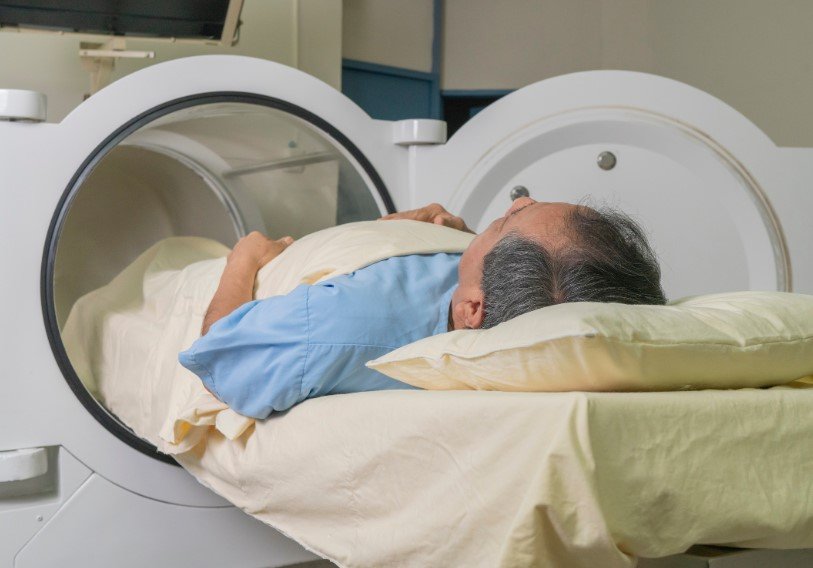American biohacker Bryan Johnson is once again making waves — this time claiming that a 90-day hyperbaric oxygen therapy protocol has made his body biologically resemble that of a 10-year-old. The man behind the controversial anti-aging Blueprint project says he’s “feeling younger than ever,” but medical experts aren’t ready to pop the champagne.
Johnson’s statement, released late Monday, comes as part of his broader mission to “live forever,” a goal that has earned him as much ridicule as it has admiration. With the help of a regimental lifestyle, dozens of daily supplements, and the occasional high-end experimental treatment, he’s trying to hack biology itself.
Hyperbaric Oxygen Therapy, or HBOT, is the latest weapon in his arsenal. And while there’s some science behind it, there’s also a lot of skepticism.
Oxygen Therapy: Healing Aid or Biohacking Hype?
HBOT isn’t new. It’s been around for decades, mostly used to treat divers with decompression sickness or patients suffering from carbon monoxide poisoning. But using it to reverse aging? That’s another story.
In these sessions, people lie inside a pressurized chamber and breathe in pure oxygen. The idea is simple: more oxygen, deeper into the tissues, could trigger the body’s natural repair systems. Some preliminary research even suggests potential cognitive or physical benefits in older adults.
But Johnson’s claim — that 90 days of HBOT turned back his biological clock to pre-adolescence — is, to put it mildly, extraordinary.
And yeah, it’s raising eyebrows in the medical world.

“I Have the Biology of a 10-Year-Old”
Johnson’s words weren’t subtle. In a now-viral social media post, he said he completed “a supervised 90-day HBOT cycle” and that tests showed his biological markers now match “a healthy 10-year-old.” He hasn’t publicly released all the metrics yet, but his claim is tied to a broader battery of measurements used in his Blueprint program.
The Blueprint team has previously tracked everything from epigenetic age to inflammation levels, skin elasticity, heart rate variability, and even penile nighttime erections. Yep, really.
In this latest experiment, Johnson says the chamber sessions were done daily, with specific oxygen concentrations and pressures monitored minute by minute. “It wasn’t casual,” he wrote. “We treated this like a clinical trial.”
Still, his critics say: slow down.
The Science Is Intriguing — But Far from Settled
There is at least some precedent for this.
A 2020 study from Israel, published in Aging, found that HBOT could lengthen telomeres — those are the protective caps on chromosomes that shrink as we age. The same study also reported a drop in senescent cells, which are often linked to age-related diseases. But even the authors of that study warned not to overhype the findings.
Dr. David Sinclair, a Harvard professor of genetics and prominent longevity researcher, responded to Johnson’s claim with cautious optimism. “Interesting if true,” he said on X, formerly Twitter. “But I’d like to see the peer-reviewed data first.”
“This is not how we define the biology of a 10-year-old,” said Dr. Ziad Nasreddine, a neurologist who developed the widely used MoCA cognitive test. “Biological age is complicated and not something we can just boil down to one therapy or one set of numbers.”
Blueprint: Biohacking or Billionaire Fantasy?
Bryan Johnson’s entire anti-aging project, Blueprint, is a $2 million-a-year system that covers diet, exercise, supplements, diagnostics, and now experimental treatments like HBOT. He has a full-time team of doctors, researchers, and engineers tracking his every heartbeat and stool sample.
Here’s a look at what the Blueprint includes:
-
Waking up at 5 a.m. daily and sleeping exactly 8.5 hours
-
Over 100 supplements and pills a day
-
Laser therapy, sound therapy, and facial rejuvenation procedures
-
A vegan, calorie-restricted diet carefully timed with his body’s circadian rhythm
He even swapped blood plasma with his teenage son at one point, a move that was widely criticized and later discontinued.
What Does the Data Actually Say?
Let’s break it down with some real-world numbers.
| Measurement Type | Johnson’s Reported Result | Average 10-Year-Old Range | Expert Reaction |
|---|---|---|---|
| Epigenetic Age | ~10 years | 10 years | Needs independent verification |
| Telomere Length | Increased by 20% | N/A | Plausible but not conclusive |
| VO2 Max (Cardio Fitness) | Comparable to teens | 45–55 mL/kg/min | Impressive if true |
| Skin Elasticity Index | Markedly improved | N/A | Subjective metric |
It’s worth noting that Johnson’s results haven’t been published in any peer-reviewed medical journal. So while his body might be showing signs of youth, science demands more than anecdotal proof.
Experts Urge Caution — But the Conversation Is Changing
Some longevity researchers are concerned that high-profile claims like this, even if well-intentioned, can mislead the public. “We want people to be excited about aging research,” said Dr. Nir Barzilai, who leads aging studies at Albert Einstein College of Medicine. “But we don’t want to sell snake oil.”
At the same time, Johnson is pushing aging research into the public spotlight in a way few others can. Love him or hate him, he’s made it cool — or at least interesting — to talk about mitochondria and DNA methylation over breakfast.
